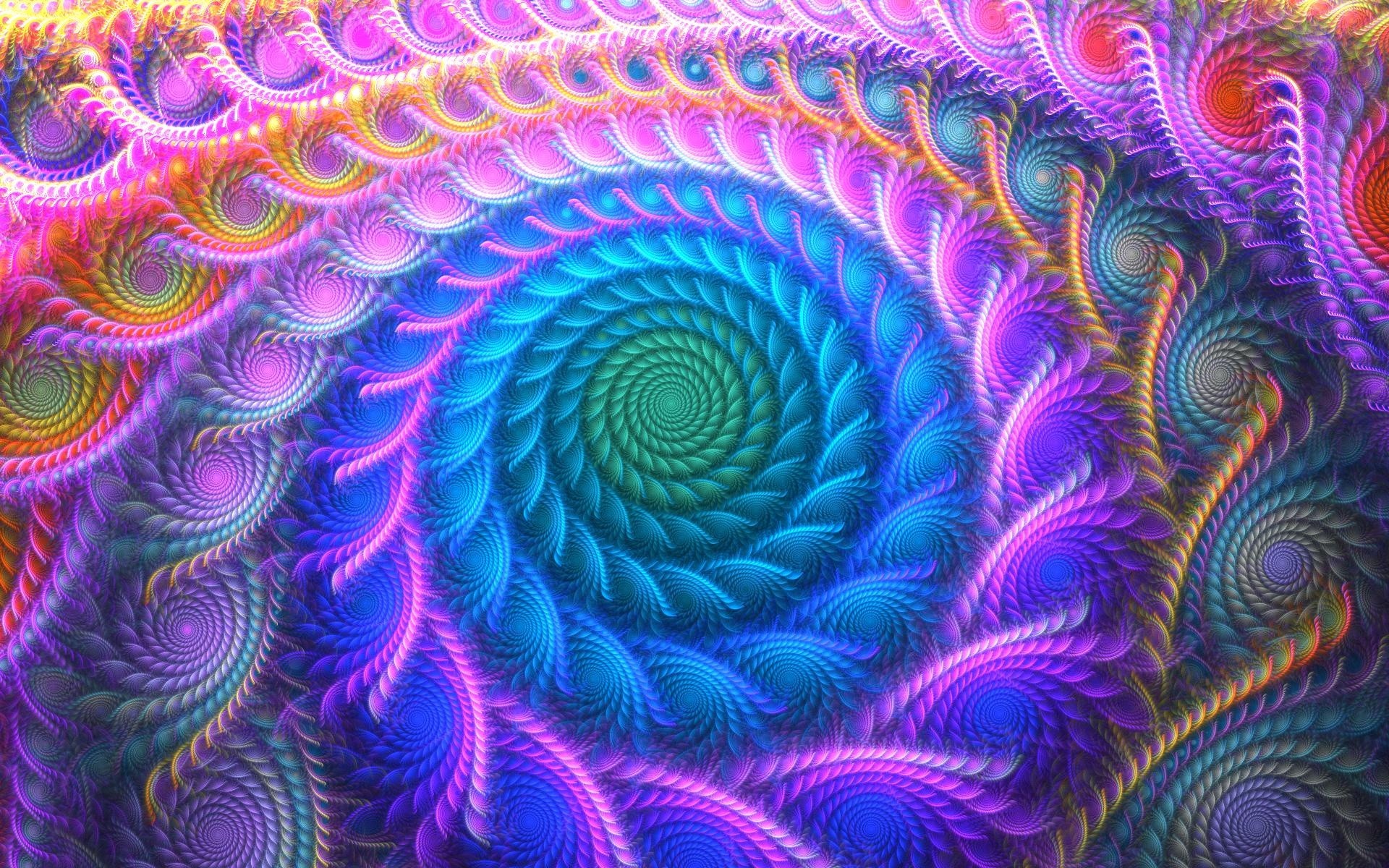Understanding Acid Trip Dreams
The Science Behind LSD-Induced Dreams
The experience of acid trip dreams can be a profound and deeply personal one, often leaving individuals with a sense of wonder and awe at the vivid imagery and intense emotions that arise.
Acid trip dreams are typically induced by the use of lysergic acid diethylamide (LSD), a powerful hallucinogenic substance known for its ability to alter perception, thought patterns, and mood.
When LSD enters an individual’s system, it binds with serotonin receptors in the brain, leading to a disruption in normal neurotransmitter activity and the subsequent experience of altered states of consciousness.
The dreams that occur during an acid trip can be highly variable in nature, ranging from pleasant and euphoric experiences to disturbing and unsettling visions.
Some common themes associated with acid trip dreams include:
- Symbolic imagery: Many individuals report experiencing vivid and symbolic images while under the influence of LSD, often drawing parallels between these images and their waking lives.
- Surreal landscapes: Acid trip dreams frequently involve surreal and dreamlike environments, which can range from fantastical to nightmarish in nature.
- Emotional intensification: The emotions experienced during acid trip dreams are often heightened, making the experience feel intensely real and immersive.
The science behind LSD-induced dreams is still not fully understood, but research suggests that it involves a complex interplay between various neurotransmitters and brain regions.
Studies have shown that LSD alters activity in areas of the brain involved in visual perception, emotional regulation, and cognitive processing, leading to the characteristic distortions and alterations of consciousness associated with an acid trip.
The brain regions most affected by LSD include:
- Cerebral cortex: The cerebral cortex is responsible for processing sensory information, controlling movement, and facilitating thought and perception. LSD alters activity in this region, leading to changes in visual perception, spatial awareness, and cognitive function.
- Basal ganglia: The basal ganglia are involved in motor control, reward-based learning, and habit formation. Alterations in the activity of these regions may contribute to the euphoric and rewarding effects experienced during an acid trip.
The significance and meaning of acid trip dreams can be highly personal and subjective, often drawing from an individual’s experiences, emotions, and psychological background.
While some individuals may find meaning in their acid trip dreams as a source of personal insight or creative inspiration, others may view the experience with caution or even fear.
In recent years, there has been growing interest in using LSD-assisted psychotherapy as a potential treatment for mental health conditions such as anxiety, depression, and post-traumatic stress disorder (PTSD).
Research in this area suggests that carefully controlled use of LSD can facilitate breakthroughs in emotional processing and help individuals confront and overcome deeply ingrained psychological patterns and traumas.
Neurotransmitter Overload: The Role of Serotonin and Dopamine
An acid trip, also known as a psychedelic experience, occurs when a person consumes LSD (lysergic acid diethylamide) or other hallucinogenic substances. This can lead to vivid and often intense dreams, which may seem illogical and disconnected from reality.
During an acid trip, the brain’s neurotransmitters, such as serotonin and dopamine, are significantly altered. Serotonin is a chemical responsible for regulating mood, appetite, and sleep, while dopamine plays a crucial role in reward processing, motivation, and pleasure.
When LSD binds to serotonin receptors, it can cause an excessive release of serotonin, leading to a state often described as “opening the floodgates.” This surge in neurotransmitter activity can result in an overload of information being processed by the brain, leading to altered perception, sensory distortions, and changes in thought patterns.
The role of dopamine in acid trip dreams is also significant. Dopamine levels increase rapidly after LSD consumption, contributing to the intense emotional experiences that often accompany acid trips. This can manifest as feelings of euphoria, anxiety, or a sense of detachment from reality.
In terms of dream interpretation, acid trip dreams can be symbolic representations of one’s inner world and unconscious thoughts. The intensity and illogical nature of these dreams may indicate unresolved conflicts, hidden fears, or unexplored desires within the individual.
The surreal landscapes, objects, and creatures that often appear in acid trip dreams are thought to represent aspects of the self that lie outside of conscious awareness. These symbols can serve as a window into one’s subconscious mind, revealing unconscious patterns, emotions, and motivations.
Some common themes in acid trip dreams include:
- Numerous people or entities often symbolize the collective unconscious or aspects of the self that are yet to be explored.
- Fear and anxiety may manifest as dark, foreboding environments or terrifying creatures, indicating unresolved emotional issues.
- Transformations or shape-shifting can represent personal growth, change, and self-discovery.
Interpreting acid trip dreams requires a willingness to explore one’s own subconscious mind and confront unresolved emotions. By acknowledging and integrating these unconscious patterns, individuals may gain deeper insights into their motivations, desires, and fears, ultimately leading to personal growth and transformation.
It is essential to note that the experience of an acid trip dream can vary greatly from person to person, and individual results may differ significantly. Furthermore, LSD use can have unpredictable effects on mental health and should be approached with caution and respect for one’s own limits and boundaries.
Ultimately, understanding acid trip dreams requires a comprehensive approach that combines psychological insights, symbolism, and personal reflection. By embracing this multidisciplinary approach, individuals may uncover new aspects of themselves, foster personal growth, and cultivate a deeper appreciation for the mysteries of the subconscious mind.
Research suggests that the altered state induced by LSD is caused by its ability to bind to serotonin receptors, leading to an overwhelming sensation of altered perception
The concept of acid trip dreams, also known as LSD dreams, has fascinated many for decades. These vivid and often bizarre experiences can provide insight into the subconscious mind and offer a unique perspective on reality.
During an acid trip, individuals may experience intense visual hallucinations, altered sensory perceptions, and a distorted sense of time and space. The effects of LSD can be unpredictable and may vary from person to person, but research suggests that its mechanism of action is related to its ability to bind to serotonin receptors in the brain.
The binding of LSD to serotonin receptors leads to an overwhelming sensation of altered perception, which can result in a range of experiences, including visual distortions, changes in mood, and increased sensitivity to sounds and smells. This altered state is thought to be caused by the disruption of normal neural activity patterns in the brain.
When it comes to acid trip dreams, researchers have identified several key themes that may appear during these experiences. These include:
- Morphing: The dreamer’s body or surroundings may transform into different shapes, colors, or objects.
- Surreal landscapes: Dreamers may find themselves in fantastical environments, such as melting cities, abstract patterns, or dream-like scenarios.
- Symbolic imagery: The dream may feature symbolic representations of emotions, thoughts, or experiences from the past.
- Fear and anxiety: Acid trip dreams can sometimes evoke feelings of fear, anxiety, or unease due to their unpredictable nature.
The meaning behind acid trip dreams can vary greatly depending on the individual’s personal associations, emotions, and experiences. Some possible interpretations include:
Facing fears and anxieties: The dream may be a manifestation of unresolved fears or anxieties, allowing the individual to confront and process these emotions in a safe environment.
Accessing the subconscious mind: Acid trip dreams can provide insight into the subconscious mind, revealing hidden thoughts, desires, or memories that are not accessible through conscious awareness.
Exploring creativity and imagination: These experiences may foster creative thinking, inspire new ideas, or encourage personal growth by pushing individuals out of their comfort zones.
It’s essential to note that acid trip dreams can be a complex and highly individualized experience. While some people may find these experiences therapeutic and enlightening, others may view them as unsettling or overwhelming.
If you’re interested in exploring the meaning behind your own acid trip dreams, consider keeping a dream journal to track recurring themes, emotions, or experiences. Reflecting on these insights can help you better understand yourself and gain a deeper understanding of your subconscious mind.
The Impact on Brain Activity: Increased Alpha Wave Activity
The phenomenon of acid trip dreams has been a topic of interest and study among psychologists, neuroscientists, and researchers for decades. When an individual experiences an acid trip dream, it can be attributed to the alteration of brain activity, specifically increased alpha wave activity.
Alpha waves are typically associated with relaxation, closed eyes, and decreased cortical activity, but during an acid trip, they become more pronounced and widespread in the brain’s cortex. This phenomenon is often linked to the consumption of psychedelic substances like LSD (Lysergic Acid Diethylamide) or psilocybin mushrooms.
When alpha wave activity increases in the brain, it can lead to changes in perception, thought patterns, and emotional states. In an acid trip dream, this heightened alpha wave activity may result in intense visuals, altered sensory perceptions, and a sense of detachment from reality.
The impact on brain activity during an acid trip is a complex interplay between various neurotransmitters, neural networks, and brain regions. Research suggests that psychedelic substances like LSD bind to serotonin receptors in the brain, leading to increased release of glutamate, a neurotransmitter involved in learning, memory, and sensory perception.
This surge in glutamate release can alter the balance of neurotransmitter activity in various parts of the brain, including areas responsible for attention, emotion regulation, and default mode processing. As a result, individuals may experience altered states of consciousness, often accompanied by vivid dreams or visions that are characteristic of an acid trip.
It is essential to note that not everyone experiences increased alpha wave activity during an acid trip, as individual brain chemistry and responses to psychedelic substances can vary greatly. Additionally, the long-term effects of psychedelic substance use on brain function and development remain a subject of ongoing research and debate.
Understanding the impact of acid trip dreams on brain activity may provide valuable insights into the workings of the human mind and its ability to adapt to altered states of consciousness. Further studies in this area could help researchers better comprehend the complex interplay between brain chemistry, neurotransmitters, and psychological processes that underlie psychedelic experiences.
However, it is crucial for individuals to approach psychedelic substances with caution and respect, recognizing both their potential benefits and risks. As research on acid trip dreams continues to unfold, it is essential to prioritize the safety, well-being, and informed consent of those who choose to engage in these experiences.
Ultimately, understanding acid trip dreams as a reflection of brain activity can help demystify the nature of psychedelic experiences and promote more open and informed discussions about their potential benefits and risks.
Studies conducted at Johns Hopkins University have shown that individuals under the influence of LSD exhibit increased alpha wave activity in their brains
An acid trip dream, also known as a LSD dream, can be a complex and highly personal experience. Understanding what these dreams mean requires an examination of the mind-altering properties of LSD (lysergic acid diethylamide) and its effects on the brain.
The study conducted at Johns Hopkins University found that individuals under the influence of LSD exhibit increased alpha wave activity in their brains. Alpha waves are typically associated with relaxation, closed eyes, and a state of reduced consciousness, but they can also be linked to heightened creativity and increased sensitivity to sensory input.
When it comes to acid trip dreams, individuals often report experiencing vivid imagery, intense emotions, and altered perceptions of time and space. These dreams can range from peaceful and serene to chaotic and disturbing, reflecting the individual’s own emotional state and experiences.
So, what does an acid trip mean in a dream? The meaning can vary greatly depending on the individual’s personal experiences, emotions, and concerns. Here are some possible interpretations:
- Spiritual or mystical experiences: Acid trip dreams often involve themes of spirituality, mysticism, and a sense of connection to something greater than oneself.
- Emotional release: These dreams can serve as an emotional release, allowing individuals to confront and process unresolved emotions in a safe and controlled environment.
- Personal growth and transformation: Acid trip dreams often symbolize personal growth, change, and transformation. They may represent the individual’s desire for self-improvement or their fear of the unknown.
- Past experiences revisited: These dreams can be a rehashing of past experiences, allowing individuals to relive and process memories in a new light.
Ultimately, the meaning of an acid trip dream is unique to each individual. By examining their personal emotions, experiences, and concerns, individuals can better understand what their dreams mean and how they can apply that understanding to their waking lives.
Interpreting Acid Trip Dreams
Deciphering Hidden Meanings Behind Lucid and Unconscious Thoughts
Interpreting acid trip dreams can be a complex and subjective process, as they are influenced by various factors such as the individual’s mental state, personal experiences, and emotional responses during the trip. However, there are some general principles and techniques that can help decipher the hidden meanings behind lucid and unconscious thoughts in these dreams.
To begin with, it is essential to understand the concept of acid-induced dreamscapes and their potential symbolism. LSD (lysergic acid diethylamide) is a powerful psychoactive substance known for its ability to alter perception, thought, and mood. When taken, it can induce vivid visuals, heightened sensitivity, and altered states of consciousness.
In the context of dreams, the effects of LSD can manifest in various ways, often blending reality and fantasy. Dreamers may experience intense emotional releases, encounter surreal landscapes, or engage in lucid conversations with fictional characters. These experiences are not random; they contain hidden meanings that require interpretation.
One technique for deciphering acid trip dreams is to focus on recurring themes or motifs. Identify the dominant colors, shapes, and emotions present in the dream. These elements can serve as symbols, reflecting aspects of the individual’s inner world or unresolved emotional issues. For example:
- Dark colors (such as black, gray, or purple) may indicate feelings of sadness, fear, or depression.
- Bright colors (like red, orange, or yellow) often signify energy, excitement, or optimism.
- Specific shapes, like spirals or geometric patterns, can represent transformation, growth, or interconnectedness.
Another approach involves considering the dreamer’s personal experiences and connections to the symbols. For instance:
- If a dream features a particular location, reflect on any memories associated with that place, as they may hold significance for the individual’s emotional state or unresolved conflicts.
- If an object or character appears in the dream, think about its relevance to the person’s life, interests, or values. This can help uncover underlying motivations or desires.
When interpreting acid trip dreams, it is also crucial to consider the context in which they occurred. The state of mind, emotional state, and environment at the time of the dream can influence its meaning. Reflect on factors such as:
- The presence of lucidity: Dreams with high levels of lucidity (i.e., awareness that one is dreaming) often indicate a desire for control or mastery over the subconscious.
- Emotional intensity: The degree to which the dreamer experienced strong emotions can provide insight into unresolved emotional issues or areas where personal growth is needed.
Interpreting acid trip dreams demands patience, self-awareness, and a willingness to explore one’s inner world. By employing these techniques, individuals can gain a deeper understanding of their subconscious thoughts, emotions, and desires. Remember that the meaning behind each dream is unique and may change over time as the individual grows and evolves.
The Concept of Personal Symbolism: Dream Analysis Through a Psychological Lens
The concept of personal symbolism plays a vital role in interpreting acid trip dreams. When individuals experience an altered state of consciousness due to substance use, their brains process and consolidate memories and emotions differently, resulting in the formation of unique symbols and metaphors.
Personal symbolism is a key aspect of dream analysis, allowing us to tap into the subconscious mind and uncover hidden meanings behind seemingly bizarre or fantastical images. By examining these symbols through a psychological lens, we can gain insights into an individual’s thoughts, emotions, and experiences, providing a window into their inner world.
In the context of acid trip dreams, personal symbolism can reveal underlying fears, desires, and anxieties that may be too difficult to confront in waking life. For instance, a dream about floating on water might symbolize feelings of powerlessness or disconnection from one’s emotions, while a dream about flying could represent a desire for liberation or transcendence.
However, it is essential to consider the individual’s personal context and experiences when interpreting their acid trip dreams. A dream that may seem meaningless at first glance can be rich in symbolism and meaning when understood through the lens of an individual’s life history, emotional struggles, and psychological profile.
The process of interpreting acid trip dreams involves active engagement with one’s own subconscious mind and a willingness to explore the depths of one’s psyche. By engaging with personal symbolism and exploring its connections to waking experiences, individuals can develop a deeper understanding of themselves and their place in the world.
Ultimately, the goal of dream analysis is not to uncover a single, definitive meaning but rather to foster self-awareness, promote emotional intelligence, and encourage personal growth. By embracing the complexities and ambiguities of acid trip dreams, we can tap into our full potential and unlock the secrets of our own minds.
Moreover, personal symbolism in acid trip dreams can be influenced by various factors such as an individual’s upbringing, cultural background, and life experiences. For example, a dream about snakes may symbolize fear or anxiety in some cultures but represent transformation or renewal in others.
The study of personal symbolism in acid trip dreams requires a multidisciplinary approach, incorporating elements from psychology, philosophy, anthropology, and neuroscience. By exploring the intersections between these disciplines, we can gain a more comprehensive understanding of human consciousness and the symbolic language that underlies our experiences.
According to the psychoanalytic school, dreams are a way for the unconscious mind to communicate with the conscious mind through personal symbolism
The psychoanalytic school suggests that dreams are a way for the unconscious mind to communicate with the conscious mind through personal symbolism in language. This implies that when we have an acid trip dream, it’s not just a random jumble of images and emotions but rather a deliberate attempt by our subconscious to convey a message.
According to this perspective, the meaning of an acid trip dream lies in its unique blend of symbolic representations, often rooted in personal experiences and unconscious desires. To interpret such dreams, one must tap into their own symbolism and explore what these symbols might represent at a personal level.
One approach is to categorize the dream elements into different categories:
- Symbols of Loss or Separation: These symbols may indicate feelings of disconnection, isolation, or fragmentation in one’s waking life. For example, if you dream about losing someone or something essential, it could represent a sense of disorientation or confusion.
- Symbolic Representations of the Subconscious: Dreams featuring bizarre creatures, labyrinthine corridors, or abstract landscapes may be an expression of your repressed thoughts and desires. These symbols might need to be deciphered through self-reflection and intuition.
- Recurring Themes: Pay attention to recurring themes in your acid trip dreams, as they can indicate unresolved emotional conflicts or unconscious patterns. By examining these patterns, you may uncover hidden aspects of yourself that require integration.
When interpreting an acid trip dream, consider the emotions and sensations experienced during the dream. Were you feeling anxious, joyful, or fearful? These emotions often relate to unresolved issues in your waking life and can provide valuable insights into your inner workings.
To unlock the meaning of an acid trip dream, try the following exercises:
- Free Association: Write down any associations that come to mind when thinking about specific elements from your dream. What memories do these symbols evoke?
- Emotional Connection: Reflect on how you felt during and after the dream. Were there any sensations, emotions, or physical responses? Try to connect these with aspects of your waking life.
- Self-Enquiry: Ask yourself questions like “What does this dream mean in relation to my current situation?” or “How might this symbol relate to an unresolved issue in my life?”
Remember, the interpretation of acid trip dreams is highly subjective and requires a willingness to explore your own symbolism. By embracing this process and tapping into your inner world, you can unlock new insights into your unconscious mind and gain a deeper understanding of yourself.
The Relationship Between Dreams and Past Experiences: Uncovering Subconscious Memories
The experience of having acid trip dreams can be a complex and multifaceted one, with many individuals struggling to decipher their meaning. When we engage in activities that alter our perception, such as taking LSD or other psychedelic substances, our brain’s ability to process information is significantly impacted. This can result in the creation of vivid, often surreal dreamscapes that challenge our conventional understanding of reality.
One key aspect of interpreting acid trip dreams lies in examining the relationship between these dreams and past experiences. Our subconscious mind has a remarkable capacity for retaining memories, even those we may have suppressed or forgotten. When we take psychedelics, this process can be triggered, allowing previously buried emotions and experiences to resurface.
Consider a scenario where you experience an acid trip dream that features a recurring theme of being lost in a familiar place. On the surface, this might seem like a nonsensical representation of anxiety or frustration. However, by probing deeper into your past experiences and memories, you may discover a correlation between this dream and a specific event from your childhood.
For example, let’s say that as a child, you experienced a period of time spent in foster care due to family instability. This experience might have left an indelible mark on your psyche, with feelings of uncertainty and disconnection persisting long after the physical separation ended.
In this case, the dream of being lost in a familiar place could be a manifestation of unresolved emotional trauma. The familiarity of the setting serves as a trigger, allowing the subconscious to surface the previously suppressed memories and emotions associated with that experience.
It’s essential to note that acid trip dreams often defy linear interpretation and may draw upon multiple sources of inspiration from our past experiences. As you engage in self-reflection and explore your subconscious memories, you may find that seemingly unrelated events or themes intersect and overlap in surprising ways.
Approaching these dreamscapes with an open mind and a willingness to confront the complexities of your own psyche can lead to profound insights into both your past experiences and your current mental state. By doing so, you may uncover hidden patterns of behavior, repressed emotions, or unexplored areas of your personality that are ripe for growth and development.
Ultimately, the art of interpreting acid trip dreams lies in embracing their subjective nature and using them as a tool for self-discovery. By exploring the intricate web of connections between our past experiences and the subconscious memories that inform our dreams, we can gain a deeper understanding of ourselves and the world around us.
Research conducted at Harvard University suggests that dreams can be influenced by past experiences, revealing repressed memories or unresolved conflicts
The concept of acid trip dreams has fascinated individuals for decades, and interpreting their meanings can be a complex and intriguing process. An acid trip, in this context, refers to a dream that is induced by the consumption of psychoactive substances, particularly LSD or other hallucinogens.
When experiencing an acid trip dream, it’s common for individuals to report vivid, surreal, and often disturbing images, thoughts, and emotions. These dreams can be overwhelming and may leave the individual feeling disoriented and confused upon waking.
Researchers have suggested that acid trip dreams are a result of the brain’s attempt to process and integrate new information, particularly in relation to past experiences and unresolved conflicts. The LSD or other psychoactive substance can alter brain chemistry, allowing repressed memories or hidden emotions to surface during the dream.
A key aspect of interpreting acid trip dreams is recognizing that they often contain symbols and metaphors that tap into the individual’s subconscious mind. These symbols may hold deep meaning and significance, revealing underlying concerns, desires, or unresolved issues. For example, water in an acid trip dream could symbolize emotional turmoil or spiritual searching.
To better understand the meaning of an acid trip dream, it’s essential to reflect on the events leading up to the experience. Were you under significant stress or experiencing anxiety prior to the dream? Did you consume a substance that altered your perception and brain chemistry?
Another approach is to examine the themes and emotions present in the dream itself. Do you feel a sense of fear, anxiety, or vulnerability? Are there any recurring symbols, colors, or textures that appear? Identifying these patterns can help shed light on underlying issues or unresolved conflicts.
Research conducted at Harvard University suggests that dreams can be influenced by past experiences, revealing repressed memories or unresolved conflicts. By acknowledging and exploring the possible meanings behind acid trip dreams, individuals may gain a deeper understanding of their own psyche and uncover hidden aspects of themselves.
- Barber Dream Meaning: What Does A Barber Mean In Your Dream? - September 16, 2024
- Bug Spray Dream Meaning: What Does Bug Spray Symbolize In Your Dream? - September 14, 2024
- Brook Dream Meaning: What Does A Brook Symbolize In Your Dream? - September 13, 2024







